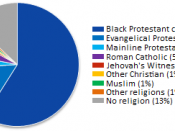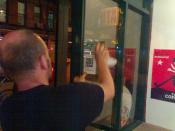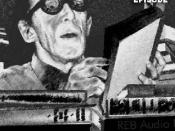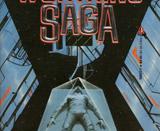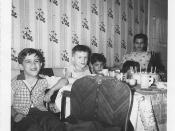How Setting Affects the Story The location and time period of which the story is set affects the readers understanding of the tale. It makes the text more believable, as events are more realistic to time periods. People act differently in different settings. While reading, one takes into account the practicality of events and judges whether they are consistent with the time. This then affects whether the reader enjoys the story or not. Caldwell's short story "Daughter"ÃÂ has a setting that greatly affects the reader's interpretation of the events that unfold.
The story seems to take place in the early part of the 20th century. It held some aspects that were slightly behind as well as slightly ahead of its time, however. The presence of automobiles and the reference to them as "cars"ÃÂ leads the reader to believe that the novel takes place after 1920. The way in which African-Americans are titled as "Negroes"ÃÂ and the significance of the cotton gin and share cropping give an impression of late 18th century influences.
In the early 1900's and in the story "Daughter"ÃÂ farming was the way of life in the southern United States. The main character, Jim, made a living through sharecropping. He receives his pay in the form of food and shelter. Jim needs these to support him and his daughter, Clara, who is eight years old. After a mule on the farm dies, the owner blames Jim and revokes his shares. Actions like this were accepted in the early part of the 20th century, but are not common today. People in present society would argue that the mule did not die because of Jim. Therefore, Jim would not be responsible, and should not have to reimburse the owner because of it.
In addition, society held certain beliefs that African Americans were inferior to the white race. Any resistance or disrespect towards their white counterparts would cause serious trouble. In the story, Jim is a "Negro"ÃÂ which affects his rights. The owner of the farm is most likely white, and expects the workers not to question his authority. There was not much Jim could do to prevent his loss of shares, and any argument could have cost him his job or possibly his life. If Caldwell had chosen to set the story in a more recent time, the reader would be more inclined to expect Jim to argue with the owner, in order to keep his money and support his daughter.
While Jim is in jail, he repeatedly recites to the gathering crowd that his "Daughter woke up this morning again saying she was hungry."ÃÂ (Caldwell 39) The key word there is "again"ÃÂ which suggests that the girl had been hungry and complaining for a length of time. Human beings have a certain tolerance for annoyances, but after a time we can begin to lose patience and react without thinking clearly first. Having to listen to his daughter complain that she was constantly hungry, caused pain to Jim. He was working hard to make a living but still did not have what he needed to support his family. Jim then lost the ability to tolerate his daughters whining.
When the reader learns that Jim shot his daughter, it comes as quite a shock. In today's time, killing is something with which we are not familiar- especially the killing of family members. The setting of the story, however, makes this tragic event more acceptable. In the 1920's, guns were commonly seen and commonly used. Law enforcement was simpler, as there was only need for a sheriff, because most people dealt with matters on their own. Then the sheriff took Jim to jail, where a crowd of curious townspeople soon gathered.
The townspeople come to a conclusion that it was not morally right to keep Jim locked up. A man drove up in his car, and brought out a crowbar, which was used to "Pry that jail door open and let Jim out."ÃÂ (Caldwell 39) The sheriff then backed off and told Jim to "Take it easy."ÃÂ (Caldwell 39) He did not want to interfere with the large crowd, who was pretty worked up and intent on letting Jim out of jail. There was nothing Jim could do to prevent his daughter from going hungry. He did not want to ask others for help, which would probably embarrass Jim and make him feel indebted to someone. In addition, the other people in that society may not have had enough to spare to feed Jim's child. Jim could not handle the responsibility and felt incredibly guilty for it. The people understood that Jim regretted his actions and did not consider him a threat. They realized it was not his fault that his daughter was hungry, and felt badly because of what the farm owner did. They decided it was not right for him to be punished.
The reader tends to agree with the townspeople and feels sympathy towards Jim. The setting of the book creates the sympathy from the audience. If the book was set later in time, after the justice system develops and society changes, murder is considered murder, and when someone is killed, there are no further questions. In addition, today's world does not usually contain instances where people raid jails and let others free.
The short story "Daughter"ÃÂ demonstrated how the setting of a novel can influence the plot to a degree where it would no longer be realistic if it were not set where and when it was. The way society worked and the values it held made the events appropriate. While reading "Daughter,"ÃÂ one can understand the people's thinking more, as it is consistent to what life was like in the southern United States in the early 20th century.
